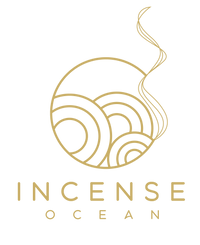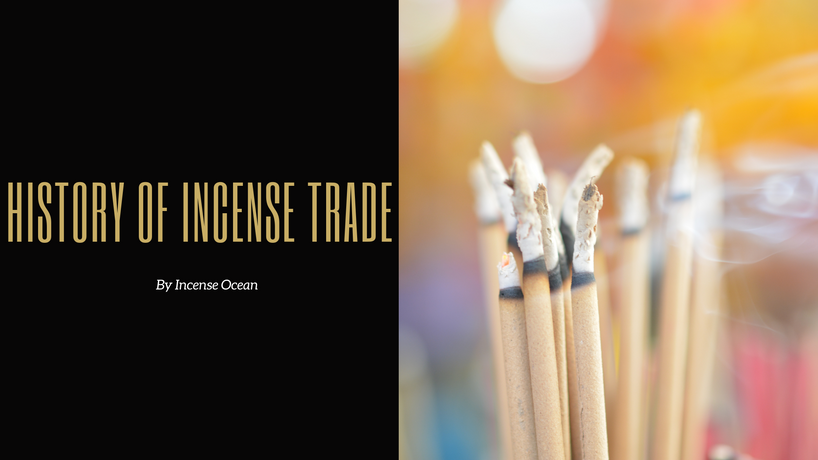- No products in the cart.
History Of Incense Trade
25
Jan

History Of Incense Trade
The word incense trade routes were referred to an ancient network of significant land and way for sea trading. The trade route has a link to the Mediterranean world with eastern and southern sources of Incense, spices, and other goods that are luxurious, which stretches from the Mediterranean ports and goes all the way across the Levant and Egypt through Northeastern Africa and Aria to India and the most distant places.
The routes made it possible to trade goods, including Arabian frankincense and myrrh, precious stones, Indian spices, ebony, silk, pearls, and fine textiles. The goods from Africa's horn are-: feathers, animal skins, rare woods, gold, slaves, Somali frankincense.
It is roughly between the 7th century BC and 2nd century AD that the incense land trade Flourished from south Arabia to the Mediterranean. Shivta, which happens to be one of the desert cities in the Negev, was linked to the Mediterranean end of the Incense. Let us check more on this topic by checking out the early history.
It is roughly between the 7th century BC and 2nd century AD that the incense land trade Flourished from south Arabia to the Mediterranean. Shivta, which happens to be one of the desert cities in the Negev, was linked to the Mediterranean end of the Incense. Let us check more on this topic by checking out the early history.

Early history
The navigation along the Red Sea is what the incense trade that connects Egypt to the Incense producing lands depends heavily on. The Egyptians based their business on importing spices, exotic wood, and gold from the land of punt and the Arabian union. They took India's vessels to Aden while bringing the goods to the Arabian.
" Rawlinson " the long-debated “ships of Tarshish” were identified by “Rawlinson" as a Tyrian fleet equipped at Ezion-Geber. Several voyages were traded to the east to bring silver, gold, ivory and precious stones. The Ophir port was the place the goods were transshipped.
During the ancient time, south Arabia and the Horn of Africa were considered the significant incense suppliers, but, in today’s era, the commercial centre for the trade-in gums has been Oman and Aden. The early ritual texts from Egypt show how Incense would be brought to the upper Nile by land traders, but fresco provided the most spectacular proof of the trade, dated around 1500 BC on the temple wall at Thebes.
It commemorated with the journey of a fleet which the Egyptian queen has sent to the punt land. There were several five ships depicted in the reliefs, and the vessel is filled with treasures, and one of the treasures is of thirty-one small Incense trees in tubs that were on board.
Greek text, including the Periplus Maris Erythraei, refers to coastal sites in Somalia, India, and Southern Arabia. The trade-in cassia, myrrh, frankincense bdellium, and so many gum resins were named duaka and kankamon and
Mok rout.
Gerrie in the Persian Gulf was one of the most important trading points of the trade of Incense from the Persian Gulf to the Mediterranean Sea. The historian Strabo reported that Babylonian exiles founded it as a Chaldean colony.

Gerrie was very influential in that he exercised influence over the trade route of Incense across Arabia to the Mediterranean, to the extent that he had control over the aromatic trade to Babylon during the 1st century BC. One of the essential entry ports for goods shipped from India was Gerrie.
Yemen was able to attract settlers from the Fertile Crescent because of its prominent position in the incense trade. The economy of Yemen found the frankincense and myrrh trees to be significant, and the rulers gave made it to be recognized as a source of wealth. Exploration was made recently, discovered an ancient trade route from eastern Yemen in the region of Mahra.
To gain control over the trade along the incense route, Tiglath-Pileser all attacked Gaza. The Assyrian document made it known that Tiglath-Pileser III advanced through Phoenicia to Gaza. The attack made Gaza sacked, and the Gaza ruler made an escape to Egypt, but after some time, he began to act as a vassal administrator. The attack was for them to gain access and control of the South Arabian incense trade because of how it has prospered along the region.
The inscription of Archaeologist made a statement of the retrieving of booty from the mu-u-a-a-a land, which can mean the munites mentioned in the Old testament. The group minause of South Arabia was identified by Some scholars involved with the incense trade and covered the Incense Route of the northern trading outposts.
The kingdom of Arabia was incredibly blessed with wealth because of the Aromatic from Dhofar and luxurious goods. From the natural labour of Khor Rori, the aromatic Dhofar were shipped out, and it stretches towards the western inhospitable South Arabian coast.
The products were moved by caravans north to Shabwa, then to Qataban, Saba, Ma'in and Palestine, then finally to Gaza. They showed evidence that they were traded products From the Dhofar region with the Sumerian Magan people of Dilmun and Qatar because they use most of the resins for medicinal purposes.

CONCLUSION
We have vastly discussed The history of the incense trade. Although incense trading is an ancient network of significant land, it is also understood as a means for sea trading. Hence, many countries have taken incense trading as a source of income.
Arabia and India trade in Incense and spices had a rapid increase, and for the first time, Greeks started to trade directly from India. We have also seen how the incense trading route made goods such as frankincense, myrrh, precious stones, Indian spices to be exchanged.







